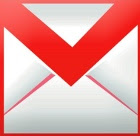If you wish to bring up Windows' file search
minimise all your windows and press
F3. You can also search within a certain folder too: open that folder up in Windows Explorer (the name for the program that opens when you double click on 'My Documents', 'My Computer', etc) and - you guessed it - press
F3.
Pressing F3 opens search dialogs in many other programs as well: in Internet Explorer it opens (and closes) the vertical search bar; in MS Outlook it opens up the 'Advanced Find' dialog. Try pressing
F3 when using applications that have some sort of search facility.
In a similar vein, you can open up the find facility in many applications by holding down the
Control ('Ctrl') key and pressing
F.
To explain the difference between search and find, consider that you will
search for a web page and when you have opened it you can
find text within it. In MS Word
Ctrl + F opens the 'Find and Replace' dialog. As with
F3, try it out in any program that has a find facility.
Of course some programmers use slightly different standards. For example in Firefox both
F3 and
Ctrl + F open the find word dialog at the bottom of the screen.
Happy hunting.
 A while ago I posted a short article about how to list unread emails in Google Mail. I have found a way to also list unread emails which have a particular label. Simply enter label:unread label:XXXXX in the search bar - replacing XXXXX with the particular label applied to unread messages you wish to find. For example, if you have some messages labelled with Work, you can find any of those that are unread by searching for label:unread label:Work.
A while ago I posted a short article about how to list unread emails in Google Mail. I have found a way to also list unread emails which have a particular label. Simply enter label:unread label:XXXXX in the search bar - replacing XXXXX with the particular label applied to unread messages you wish to find. For example, if you have some messages labelled with Work, you can find any of those that are unread by searching for label:unread label:Work.
